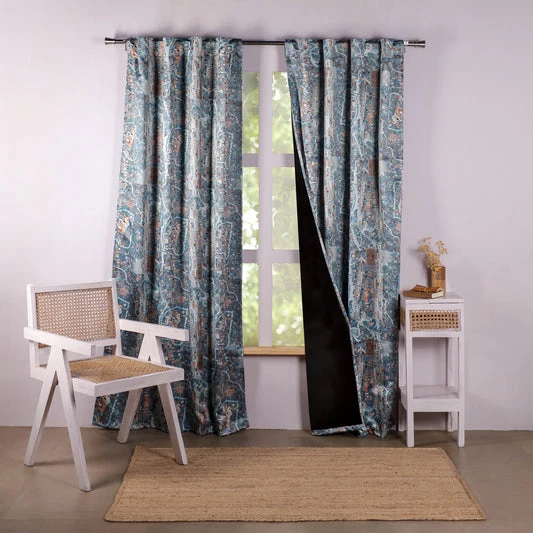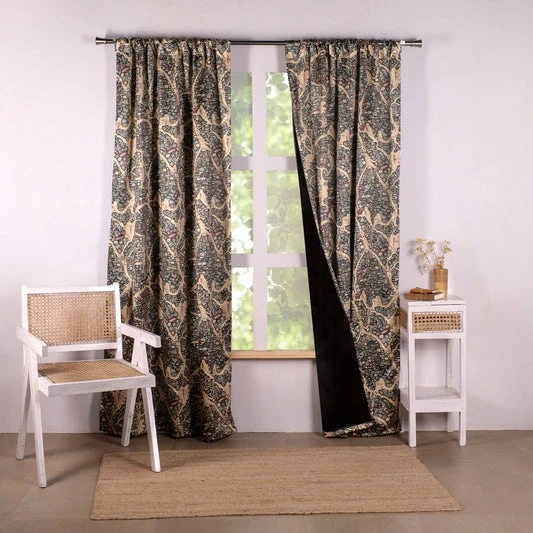There’s nothing quite like waking up feeling fully rested and refreshed. But for many of us, that kind of sleep seems like a distant dream—pun intended. Whether it’s the streetlights glowing through your window or the early morning sun sneaking in before your alarm goes off, light pollution plays a bigger role in your sleep quality than you might think. That’s where blackout curtains come in.
Let’s explore how these unassuming home accessories can actually help you get better sleep—backed by science.

Why Light Affects Your Sleep
To understand how blackout curtains help, it’s important to first understand how light impacts your sleep. Your body operates on a 24-hour internal clock called the circadian rhythm. This rhythm is largely influenced by natural light and darkness, which help regulate melatonin, the hormone responsible for making you feel sleepy.
When your environment is exposed to artificial light—like city streetlights, car headlights, or even a bright moon—it can trick your body into thinking it’s still daytime. This suppresses melatonin production and disrupts your sleep cycle, making it harder to fall and stay asleep.
Enter: Blackout Curtains
Blackout curtains are designed with thick, tightly woven fabric that blocks out nearly 100% of incoming light. Unlike standard curtains or drapes, which often allow light to filter through, blackout curtains create a pitch-dark environment that mimics nighttime—regardless of what’s happening outside.
Here’s how they contribute to better sleep:
1. Boosts Melatonin Production
By blocking out external light, blackout curtains help your brain produce more melatonin. With higher melatonin levels, your body naturally feels drowsier when it’s time for bed, making it easier to fall asleep quickly and stay asleep longer.
2. Improves Sleep Quality
Even small light interruptions—like a car’s headlights or a flashing streetlamp—can disrupt your sleep cycles. Blackout curtains reduce these disturbances, allowing your body to go through the full sequence of sleep stages (light sleep, deep sleep, REM). This not only improves how long you sleep, but how well you sleep.
3. Supports Shift Workers and Day Sleepers
For people who work night shifts or have irregular schedules, sleeping during daylight hours is notoriously difficult. Blackout curtains trick the brain into thinking it’s night, helping people sleep during the day just as deeply and restfully as they would at night.
4. Creates a Cool, Comfortable Environment
Sleep science also shows that a cool, dark room is optimal for restful sleep. Blackout curtains add insulation, helping keep your room cooler during hot months and warmer during cold ones. Combined with the darkness they provide, they create the ideal environment for quality sleep.
5. Reduces Noise and Enhances Privacy
While not their primary function, many blackout curtains also help muffle outside noise, which is another common sleep disruptor. The thick fabric not only blocks light but also acts as a barrier to sound. Plus, they offer extra privacy—no more silhouettes visible from the outside!
Ideal for Every Room (Not Just Bedrooms)
While most people think of blackout curtains for bedrooms, they’re also great for nurseries, media rooms, or any space where controlling light is a priority. Babies, for instance, benefit immensely from a dark sleeping environment, which helps regulate their still-developing circadian rhythms.
What to Look for in a Good Pair
Not all blackout curtains are made the same. When shopping for a set, consider:
- Fabric density: Heavier fabrics block more light.
- Lining: Triple-weave or foam-backed linings offer better insulation and light control.
- Size and fit: Curtains should extend beyond the window frame to fully block light leaks.
- Style: Thankfully, blackout curtains today come in stylish patterns and colors, so you don’t have to sacrifice aesthetics for function.
The Bottom Line
If you’ve been struggling with restless nights, waking up too early, or simply not feeling refreshed in the morning, your curtains could be part of the problem. Incorporating blackout curtains into your sleep routine isn’t just about décor—it’s about designing a sleep-friendly environment backed by science.
Because sometimes, the key to better sleep really is as simple as drawing the curtains.


